Mad, Bad & Dangerous to Know
The 6th Earl of Cawdor,
Hugh John Vaughan Campbell,
of Golden Grove
Introduction
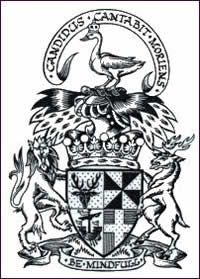
Mad, bad and dangerous to know—the phrase passed into the language after it was applied to the English poet Lord Byron. It was the famous assessment of him by his cast-off lover Lady Caroline Lamb, and even today one can scarcely read of his exploits without detecting the faint whiff of brimstone—his compulsive love affairs with women (and boys); his drinking and excesses; his reckless spending and colossal debts; the scandalous liaison with his half-sister, Augusta (who may have borne him a child in 1814); his exile in Italy and exotic death in 1824 at the age of 36 while leading an army during the war of Greek independence. Even though he died most ignominiously of fever in a Greek swamp without firing a shot in anger, this doesn’t seem to have harmed his subsequent legend and Byron is still most people’s idea of a dissolute aristocrat (though few Lords, if any, have ever had his talent as a poet).
The aristocracy has never had a shortage of the mad, bad and dangerous variety and until recently Llandeilo had one of its own. Hugh John Vaughan Campbell (1932-1993) became the 6th Earl and 25th Thane of Cawdor in 1970 and he lived for several years at Golden Grove, Llandeilo, one of the family’s several estates.
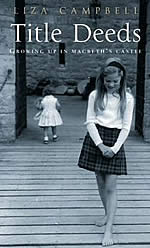
The scale and details of his own Byronic lifestyle would not have been known outside his close circle of family and friends had not one of his daughters, Lady Elizabeth (Liza) Campbell, published her memoir of him in 2006. Called Title Deeds: a Work of Friction, the play on words in the subtitle hints at what family life was like with a philandering father who boozed and bed-hopped his way through life, squandering the family's substantial wealth in the process. Without her revealing book Llandeilo would have to rely on mere anecdotal evidence of servants and neighbours in Golden Grove to find out what went on in the 1960s in this mansion overlooking the river Towy when Hugh John Vaughan Campbell, not yet the 6th Earl of Cawdor, lived there with his wife, five children, servants and assorted hangers-on.
Over the centuries Llandeilo has been the seat of three aristocratic families: the Vaughans (Earls of Carbery); the Rices (Barons Dynevor); and Campbells (Earls of Cawdor). Newton House in Dinefwr Park was for centuries the stately home of the Dynevors, only recently rescued from ruin by the National Trust after the 9th Baron Dynevor was forced to sell it in 1974 to pay for death duties.
Literally across the river Towy from Newton House is Llandeilo’s other former stately home, Golden Grove (Gelli Aur), with a history of similar length to Newton House. The two estates stare at each other from opposite banks of the Towy as if in an architectural stand-off. Resplendent on a hill in the middle of its utterly lovely estate, Golden Grove mansion was one of several grand houses once owned by the Scottish Earls of Cawdor. Golden Grove, which had originally been a Tudor manor house, was rebuilt from 1827-34 in a Scottish baronial style befitting its creator, the First Earl of Cawdor of the Scottish Campbell clan.
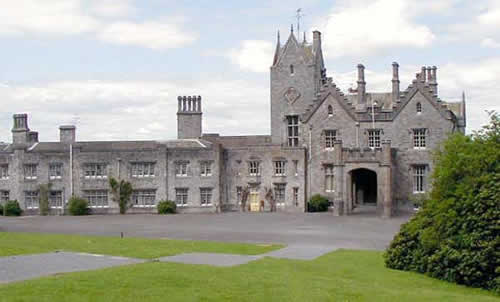
Newton House, also originally a Tudor manor house, was rebuilt a little after Golden Grove from 1856-1858 in the Venetian Gothic style fashionable with the Victorians at the time. But if the extensive―and expensive―rebuilding of these two mansions gives a clear indication of the riches of the 19th century landed gentry, it gives none of the precipitous decline of their wealth in the 20th century. Society was in transition from an agricultural to an industrial economy and most of the great landowners found themselves left behind in the rush. Fatally wounded in the march of time, the introduction of death duties in the 20th century finished them off for good as an economic and social class.
When created the 1st Earl in 1827 Lord Cawdor was already the 2nd Baron Cawdor of Castlemartin. And the Earls of Cawdor have in reserve the further titles of Thane of Cawdor and Viscount Emlyn of Castlemartin should a mere earldom not be enough, such is the profligacy with which the aristocracy sprinkle titles over themselves. If these titles ever prove insufficient there are also several manorial titles to fall back on, though the 6th Earl sold many of these in an attempt to plug the gaping hole in the family finances. The Golden Grove estate alone once came with 27 manors and lordships, and these manorial titles are leftovers from the administrative system of the middle ages, when a manor was a unit of local government, presided over by the Lord of the Manor.
Part of the Cawdor estates was the Lordship of Iscennen which consists of the land between the river Towy and the River Amman, from Llandeilo in the north to Ammanford eight miles to the south. A native of Llandybie, a village in the centre of Iscennen, bought the Lordship at auction in 1988 and since then has been permitted to call himself Lord of Iscennen, a title he is also allowed to use on his driving license and passport. Today’s Lordships come with absolutely no land whatsoever, and can’t be inherited by any children of the holders, so they were an opportune source of income for Hugh Campbell.
When the Scottish Campbells of Cawdor inherited the Welsh Golden Grove and its estates in 1804 there was a Tudor house on the site that had been home to the Earls of Carbery, a peerage created by Charles I in 1621 for the courtier and politician John Vaughan, who was at least native to the area. Only three Earls of Carbery survived the precarious inheritance system called primogeniture, because the family line ran out when the 3rd Earl, John Vaughan (born 1639), failed to leave the required male issue on his death in 1713 and the earldom became extinct. In his capacity as President of the Royal Society from 1686-1689 the 3rd Earl of Carbery was a notable amateur scientist, but in his other role as a Restoration rake he was a thorough professional, described by Samuel Pepys as “one of the lewdest fellows of the age”.
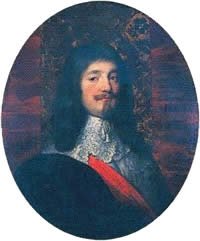
His father, Richard Vaughan the 2nd Earl, much preferred sadism to debauchery. After the restoration of King Charles II in 1660 Richard Vaughan was made President of the Council of Wales and the Marches, and Lord Lieutenant of all the Welsh Counties, in effect Viceroy of all Wales. This was reward for his steadfast loyalty during the Civil War rather than any military success: as Lieutenant-General of the King’s forces in west Wales he was spectacularly inept, losing the entire region of his command to the parliamentary forces and for which he was relieved of his commission. A contributory factor may have been his total lack of any military experience; Charles I regarded the social status of his military commanders to be vastly more important than their battlefield competence, an approach to warfare that may have had some bearing on the Royalists’ defeat in the Civil War. But after the restoration of the monarchy in 1660, when the need for military competence wasn’t quite so pressing, Richard Vaughan was made virtual ruler of Wales, only to be suddenly dismissed from all his posts in 1672 because of a public scandal. This was his ill treatment, including physical mutilation, of servants and tenants on his estate at Dryslwyn, just downstream from Golden Grove. The ill treatment included cutting the ears off several people; cutting out the tongue of another; and dispossessing all the tenants of their land. When they inherited Golden Grove, the Campbells of Cawdor thus inherited a rich history to go with it, not all of it savoury, and some of it decidedly gruesome. But then the Scottish Cawdors, with their own titled history going back to the 1st Thane in 1295, have their own black sheep, a whole meadow-full in fact, and certainly wouldn’t have needed advice on delinquency from the Welsh.
The Campbells of this period had learned the highly profitable lesson of marrying into money and they learned it well. The Stackpole estate in Pembrokeshire came into their hands by the marriage of the 16th Thane of Cawdor, Sir Alexander Campbell, to the Welsh heiress Elizabeth Lort in 1689. His son John Campbell promptly married another heiress, Mary Pryse of Gogerddan, who brought with her marriage the opulent Glanfread estates in Cardiganshire. And their son Pryse Campbell married the daughter of Edmund Bacon, the premier baronet of England, so Campbell sons proved to be good learners (and earners). As well as money, these inheritances brought with them the milder Welsh climate and this lured the Campbells south from their ancestral seat in Scotland to Wales, where they would stay for almost three hundred years.
The ancient law of primogeniture, by which only the eldest son can inherit titles, ensures that prodigious leaps sideways sometimes have to be made whenever noble loins fail to produce a son to inherit the family jewels, and the next male heir often has to be conscripted from a considerable distance away from the main family line. When the Vaughan dynasty of Golden Grove ran out of heirs in 1804, the latest Campbell, John Frederick, found himself in possession of a fine and agreeably rich inheritance. Golden Grove had been owned by the head of the Vaughan family, John Vaughan, and on his death in 1804 he bequeathed it to his friend John Campbell of Cawdor, to the bafflement and consternation of the remaining Vaughans who contested the will for thirteen years.
John Vaughan’s will was interesting, to say the least:
John Vaughan had made his will in 1786. He left his estate to whatever sons he might have by his wife; and in the event of having no sons, then to his daughters; and in the event of having no children at all, then to his wife Mrs. Letty Vaughan; and after her death to his friend John Campbell, Lord Cawdor. Such was the will, clear, positive, and perfectly in order. Now let us look at the succession. John Vaughan had no children by his wife, so there were no heirs of the body. Mrs. Vaughan had died in 1796, before her husband, so she could not inherit: of the legatees, Lord Cawdor was the only one living, and so inherited the Golden Grove estates.
But John Vaughan had a surviving half-sister plus an assortment of cousins, who clearly felt resentment that none of this great wealth was heading their direction, hence their protracted litigation. They were unsuccessful but this act of malice would be repeated in 1993 when the 1st Earl of Cawdor’s descendant Hugh Campbell caused equal dismay when he too bequeathed his estates outside of his family, disinheriting his own son and heir in the process.
As a result of their marital acumen the Campbells of Cawdor once owned a huge swathe of British soil. In 1883 they were recorded as being one of 28 families who owned more than 100,000 acres in the UK. The Cawdors owned 33,782 acres in Carmarthenshire alone, with another 17,735 acres in Pembrokeshire, and to which can be added 50,119 acres in their home county of Nairn in Scotland. The total of 101,657 acres brought in an annual income of £44,662 in 1883 (that's equivalent to £2,039,714 a year at today's prices). Interestingly, the 51,000 acres of prime agricultural land in Wales yielded the Cawdors an annual income of £35,042 (£1,600,000 today) but the 50,000 poorer Scottish acres were worth just £9,620 per annum (£439,000). Their principal residences (note the plural) were Stackpole Court, Pembrokeshire; Golden Grove, Llandeilo; Glanfread in Cardiganshire; and Cawdor Castle, Nairnshire, Scotland. But the earlier Vaughan family had owned even more of the county’s rolling acres. Carmarthenshire historian Francis Jones neatly enumerates the Vaughan’s real estate before the Cawdors took up residence:
The family occupied numerous country houses. At the height of its affluence the parent estate, that of Golden Grove, comprised over 50,000 acres, 27 extensive manors and lordships, and five castles, and when these are added to the lands of the many branches it can be truly said that nearly half of Carmarthenshire owned a Vaughan for landlord.
The most famous of the Cawdors, if Shakespeare's three witches are to be believed, was of course Macbeth (All hail Macbeth! Hail to thee, Thane of Cawdor!
). There was a historical Macbeth (1005-1057, and King of Scotland from 1040), but the modern Barony of Cawdor goes back only to 1796, with the Earldom being created in 1827. And Macbeth wasn’t even Thane of Cawdor; the first recorded Thane, Donald Campbell, makes his historical rather than theatrical appearance only in 1295. The modern-day Earls lived in Cawdor Castle until recently, but as this was built in the late-14th century, it has nothing to do with Macbeth, historical or Shakespearean. The Macbeth story that filtered down to Shakespeare was an invention of Andrew of Wyntoun, a canon of St Andrews in Fife, who completed his Cronykil in 1406, setting down facts in sequence and embroidering them with old fables and older myths. A later historian, Hector Boethius, added even more fictitious elements in 1527. When his story was embelished even further by William Shakespeare in 1606, the erroneous connection between Macbeth and Cawdor Castle was set in stone for all time.
Hugh John Vaughan Campbell, 6th Earl of Cawdor
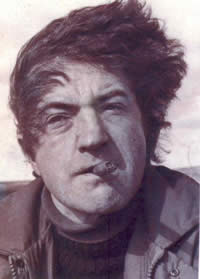
This then was the world that Hugh John Vaughan Campbell, the future 6th Earl of Cawdor, was born into on 6th September 1932. Although the family seat was Cawdor Castle near Inverness in the far north of Scotland, the Cawdors lived most of the year in London and their Welsh estates at Stackpole House in Pembrokeshire (the chief Welsh residence) and Golden Grove in Carmarthenshire. These were, after all, where three-quarters of their wealth came from and Welsh weather, while just as damp as Scotland’s, is considerably warmer in winter, so residence at Cawdor was confined to the brief northern summer. But all changed at the outbreak of war in 1939 when the government requisitioned Stackpole’s lands as a bombing range and billeted troops in Stackpole House, so that the Campbells started using Cawdor Castle as their principal home for the first time for over two centuries. This arrangement was made permanent after war ended in 1945 and Stackpole became a source of income but not a home.
Hugh Campbell's adult personality may have been decided long before he grew up. His father had been nicknamed Mad Jack in his youth and he was a remote, drunken and occasionally violent husband—once he broke his wife's toe by stamping on her foot with hobnailed boots. Ominously for Hugh Campbell, the father of mad, bad and dangerous to know Lord Byron had also been nicknamed Mad Jack, who abandoned his family when Byron was a child. Hugh Campbell's father didn't physically abandon his family as such but he was a remote parent in another way because he lived in a separate part of the castle from the rest of the family, seldom communicating with them, so he was emotionally absent as Hugh was growing up. Hugh Campbell, like Byron, disliked his neurotic mother, but whether all these eerie coincidences had any influence on his subsequent life is speculative at best. The 4th Earl of Cawdor had died in 1914 at 43 after contracting syphilis so there were plenty of role models of the negative kind dangling from the family tree.
Hugh Campbell certainly inherited his father's fondness for children's nannies and a bewildering number came and went, all for short-lived terms of employment. One incident in Hugh Campbell's early childhood involving his own nanny, a Miss Dunkerley, may go some way in explaining why:
When Hugh was about seven years old she took to ‘fooling around’ with him—something he described as a heady mix of panic and excitement. One evening, when my grandfather Jack was back at Cawdor on shore leave, Miss Dunkerley had taken Hugh into her bed as usual and was molesting him when the door creaked open. Jack Cawdor had come to join her. Miss Dunkerley jumped out of bed and managed to defer his visit with some whispered excuses and promises while Hugh lay hidden under the pile of rumpled covers, heart hammering with the thrill. Miss Dunkerley’s attentions in this scene in particular were crucial in shaping my father’s worldview.
This incident provides another point of intersection with the life of Lord Byron, who also suffered sexual abuse as a child from his nanny, the alcoholic May Gray.
Hugh John Vaughan Campbell, Viscount Emlyn and the future 6th Earl of Cawdor, received a classic establishment education at Eton and Oxford (where he was sent down for lack of any requisite work), and thence on to agricultural college where he received the rudiments of estate management. The rudiments, though, would prove vastly insufficient when most of his inheritance, and all the Welsh lands, were frittered away in a dizzyingly short time.
A Golden Age in Golden Grove
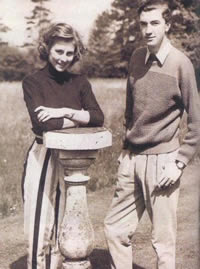
On his marriage in 1957 to Catherine Hinde, daughter of an army general, Hugh Campbell inherited Stackpole and the other Welsh estates, where his spell at agricultural college should have come in useful for securing the considerable income that flowed from them.
If you want to make God laugh, tell him your plans, advises an old proverb. Whatever plans Hugh Campbell had for his inheritance, they must have caused God plenty of hilarity: Stackpole House was demolished in 1963, then Golden Grove and its lands sold for cash in 1972, leaving Cawdor Castle as the sole family seat. The demolition of Stackpole in 1963, as described in his daughter’s memoir, gives us a fair inkling of her father’s state of mind. When Hugh Campbell applied to the local council for planning permission to renovate the house around 1962, he was turned down. His daughter describes what happened next: “In a fit of caprice he ordered a demolition crew. Stackpole was flattened. Worse, he sold the rubble as foundations for Milford Haven Oil Refinery, a hideous monolith that now blots the Pembrokeshire skyline for miles around.” (Title Deeds, Liza Campbell, Doubleday, 2006, page 53.)
Although architecturally undistinguished, Stackpole Court had been one of the greatest houses in the kingdom in the late 19th-century, and had even entertained King Edward the Seventh in great splendour in 1902. Then, thanks to a peevish Scottish Lord and his wrecking ball, all this vanished in the twinkling of an eye.
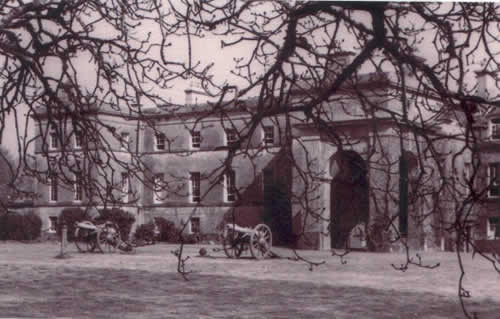
With Stackpole Court gone (and its estates had already been sold by Jack Campbell) Hugh Campbell now moved his family to Llandeilo where their other Welsh estate, Golden Grove, was situated, overlooking the meandering river Towy and its oxbow lakes. The crumbling Scottish-baronial mansion that the first Earl of Cawdor, John Campbell, built in 1827-1934 had been leased out to the County Council in 1952 for use as an agricultural college. So around 1962 Hugh Campbell built a brand new house at Llangathen across the river Towy from the old mansion, which confusingly he also named Golden Grove (the original Golden Grove is today usually referred to by its Welsh translation of Gelli Aur). It was to this new Golden Grove that Hugh Campbell moved his family after the demolition of Stackpole.
New Golden Grove is a brick neo-Georgian house with seven bays and some of its fittings salvaged from the demolition of Stackpole House. It has one of the best views of the Towy valley imaginable and it was in this idyllic setting where Hugh Campbell’s young family grew up. Liza Campbell describes her childhood at Golden Grove as the happiest years of her life:
The house he built was called Golden Grove, the English translation of Gelli Aur, and it stood on a hill on the opposite side of the valley from its Welsh namesake. Golden Grove had an elegant interior thanks to mahogany doors, and marble fireplaces ripped from Stackpole, but outside it had a Lego-like quality, with columns that were both ostentatious and slightly measly. The outstanding impression on arrival was of a giant brick shoebox. But this box was our home, and I loved, loved, loved it.
The family of five children, their mother, some relatives and various servants seemed to have been fairly self-contained when they lived here. Their father was seldom in residence, being too busy conducting his countless extra-marital affairs in London, Paris and even Africa during what would soon become known as the Swinging Sixties. Nannies seldom stayed long thanks to the unwelcome attentions of Hugh Campbell during the times he was at home; almost thirty nannies came and went, and not, as Liza Campbell observes: “because we children were waking them up in the dead of night”. His daughter gives a description of him at this time:
He dressed like Restoration buck, wearing scarlet velvet jackets with black frogging, floppy cuffs and outsize buckles on his belt and shoes, the heels of which were covered in red patent leather to match the jacket.
Obviously, such a flamboyant lifestyle needed money to sustain it and there was still plenty of land at this time yielding rent from the Cawdor’s tenants to pay for it, despite the loss of the Stackpole part of the estates. Investing in a string of failing businesses and buying apartments for himself and friends took the edge off this wealth somewhat. So did expensive cars, which were bought in profligate quantities, their regular replacement being thanks to frequent crashes caused by drunken and reckless driving rather than normal wear and tear:
…he wrote off six E-type jaguars in quick succession … Pa’s philosophy was that when in town obeying a red light after midnight was a sinful waste of precious time … Typically he would crash at night, after dinner, while drunk… Instead of spotting any correlation between drinking and the crashes, my father came to an altogether different conclusion: E-types were rubbish and their suspensions dangerous… and thereafter he drove Ferraris.
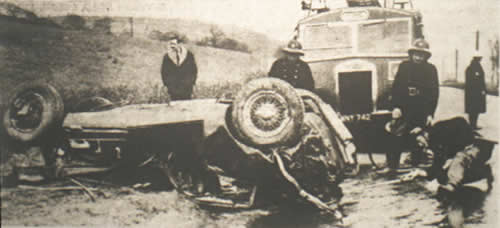
Hugh Campbell liked to have plenty of hangers-on passing through or staying in Golden Grove, a sort of retinue that may have made him feel like his medieval ancestors. One such permanent guest moved in for three years as a live-in martial arts instructor to teach him the Japanese art of aikido, one of countless fads and fashions that cluttered the Swinging Sixties. (Lord Byron had taken lessons in boxing from a champion bare-knuckle fighter, yet one more link connecting the two Lords.)
The aikido tutor styled himself Tia Honsai but far from being the wise Japanese master the name suggests he was actually a middle-aged Welshman from Cardiff called Ron Thatcher. Hugh Campbell’s reason for wanting to be an aikido master opens a window on a disturbed mind:
Hugh wanted to become an unarmed killing machine so that he could walk the earth fearlessly. He could normally achieve this state only by drinking, but this method tended to tip him from confidence into aggression
At one point Hugh Campbell formed an elite squad of aikido fighters―four male friends and his wife―and handed out leather belts he’d designed himself that would serve as the group insignia during some "future crisis'' when they would annihilate "unacceptable people''. Aikido is also a life-style, a synthesis of martial studies, philosophy, and religious beliefs, with self-discipline amongst its key precepts. Aikido’s skills of controlled violence are intended for self-defence only and are definitely not supposed to be turned against one’s own wife, as Hugh Campbell seemed to believe, once cracking the roots of her front teeth with an aikido chop. Aikido translates as ‘the way of harmonious spirit’ something Hugh Campbell seems to have been unaware of.
One of Hugh Campbell’s closest friends at this time was the Queen’s cousin, society photographer Lord Lichfield, and a partner in his various bed-hopping exploits:
His new best friend was the photographer Patrick Lichfield who had a conveyor belt of model girlfriends. Hugh hoovered up Patrick’s cast-offs. They shared everything: tailors, cars, hairdressers, girls. The only difference was that Patrick was single and Pa was not.
Despite Hugh Campbell’s dissolute life the years spent in Golden Grove were relatively happy for his family; at this point, Hugh was mainly an amusing spendthrift who “had fallen for the great myth—that a destructive streak was romantic.” But with the power that arrived at his father’s death, the romance soured and the skies darkened, quite literally, when the family was relocated to Cawdor Castle in the far north of Scotland. The cause? The 5th Earl, Hugh Campbell’s father John, died suddenly in 1970 and Hugh John Vaughan Campbell became the 6th Earl of Cawdor on his demise.
The 6th Earl and Cawdor Castle
A year after the move to Cawdor Hugh Campbell faced the first problem of his new life―what to do about the stepmother whom he’d inherited along with the property. His father, Mad Jack, had divorced his first wife and remarried, as indeed would Hugh; indeed, only blood sports seem more popular than divorce with the aristocracy. Hugh Campbell himself later remarried an exiled Czech countess called Angelika Lazansky who thus became a British countess on her marriage.
Eventually the decision was taken to evict his own stepmother from the castle, a decision made a little easier after Hugh Campbell discovered that she had been in secret discussions to hand Cawdor over the National Trust on condition she was allowed to remain as tenant. Within weeks of this discovery the stepmother, in Liza Campbell’s words, was forcibly relocated. When the move came, Hugh virtually had to prise each one of Betty’s fingers off the house
. (Title Deeds, page 163.)
Hugh Campbell brought his actual mother to Cawdor for a while but she too was eventually sent on her way. Eviction of sitting relatives became yet another unsavoury pastime of the 6th Earl of Cawdor, something the stepmother clearly watched and learned from because she evicted her entire stepfamily on her husband’s death in 1993.
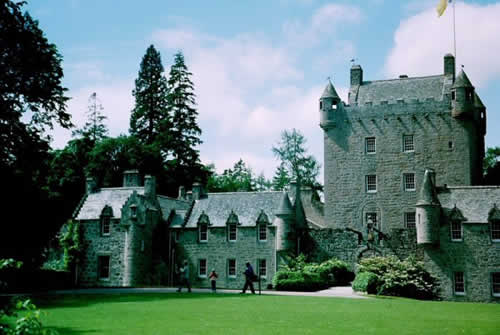
The family had been to Cawdor often enough before their permanent move, having spent their summers there when they were being brought up in Wales, but it was not a popular place with them, at least not with Lady Campbell, who can manage some refreshingly unladylike language when she chooses: “Staying at Cawdor was not something I ever felt any enthusiasm about. If anyone had told me we were due to move there I would have thrown a shit fit”. (Title Deeds, page 120.)
The new Lord and his wife modernised Cawdor castle after their arrival but life at Cawdor was distinctly unrelaxed: all members of the family, parents and children, had to wear formal dress every evening for dinner. The responsibility of Cawdor weighed heavily on the new Lord’s shoulders and Hugh Campbell began to exhibit strange behaviour. He feared that his evicted stepmother was trying to possess the building with some sort of black magic and placed open scissors all around the place to act as ‘hexes’ to keep her presence at bay. He regularly used knives to threaten people with and once threw a dagger at a guest for no other reason than he was irritating him.
Within two years of moving to Cawdor, Hugh Campbell sold Golden Grove and the entire Welsh estate, whose profits had taken care of both his extravagant lifestyle and Cawdor’s upkeep:
The land that had come into the family in the seventeenth century had lasted seventeen years in his hands. The decision to sell was many things but most of all it was short-sighted. He had halved the land ownership, and the loss of Wales had turned the financial equilibrium on its head. Running a pile like Cawdor was a whirling drain; the heating alone costs tens of thousands of pounds every year.
An iron law of economics tells us that if expenditure exceeds income then the direction of any business venture is remorselessly towards whatever rocks are close by. Instead of investing the sudden cash influx in Cawdor, Hugh Campbell went on a spending spree. Two Ferraris, a pair of Range Rovers and numerous vintage cars materialised―souped-up Minis, a Model T Ford, a Haflinger, a wartime Chrysler, a couple of troop trucks and a cheesy, Chitty Chitty Bang Bang-style Bentley. A ruined and uninhabitable castle was added to the perfectly adequate Cawdor. The spend-spend-spend response was a symptom of how his deteriorating mental state was trying to cope with serious problems.
He bought flats in London and Paris for himself, his mistresses and a few lucky hangers-on. He invested in crackpot schemes from Canada to Australia. In due course he owned a jewellery shop, a helicopter company and then went into film production. All these businesses failed. To fund his lifestyle he sold a bit here and a bit there in a steady trickle.
His dependency on drink (and cocaine) grew as the family fortunes declined and he became autocratic, increasingly taking his problems out on others, but it was his long-suffering wife who bore the brunt of his abusive behaviour. Staff who had been at Cawdor for decades in his father’s employ left; even their cook who had been brought with the family from Golden Grove finally had enough and went home to Llandeilo. The dark side of him was reserved mainly for his family and servants; with guests he was usually charming and convivial, but his wife and children dreaded being left alone with him once guests had departed. As Liza Campbell describes his state of mind: “I concluded that only poor people got sectioned on psychiatric wings. Rich lunatics raved free with everyone looking the other way.” (Title Deeds, page 202.) Classic symptoms of extreme alcoholism include memory loss and his daughter tells us that he seldom, if ever, remembered his abuses the next day. Despite all this he was still capable of eliciting genuine love from his family:
Family life had had gradually become nightmarish. Yet I loved him. We all did. Within the most permanent state of exasperation he lived in, he needed only to make a tiny gesture to make us feel that one day all might be well again.
Without the income from the Welsh estates any more, Cawdor Castle had to be opened to the public. The bizarre behaviour continued though, such as forcing the family to eat the most outlandish food which included swan, red squirrel and hedgehog. The drunk-driving and car-wrecking continued apace. The verbal and psychological abuse of his wife turned into physical abuse: once, without any provocation whatsoever the 6 foot 4 inch tall Earl hit his wife so hard she had whiplash. Another assault was followed by a bout of furniture wrecking. Perhaps the most alarming and potentially most dangerous incident was directed against his daughter Liza Campbell, then sixteen, when he entered her bedroom one night, extremely drunk, and ordered her to his bed:
Pa told me to lie under the covers. I got under the bedspread, but he told me to get between the sheets. I did as I was told. He lurched round to his side of the bed, but as he reached forward to pull back the blankets he gave out a little slack-jawed groan; his eyes rolled back in his head and he collapsed across the bed, spark out. I wriggled away faster than an eel, sped over to the tapestry and fumbled for the hidden door latch.
The sixteen year old Liza spent the rest of the night hidden in a closet, buried under a heap of clothes, terrified should her father wake up from his drunken stupor and come looking for her. Was this an attempt, conscious or not, to emulate Lord Byron again, in this case his incest with his sister? Whatever it was, a close call had revealed the depths to which Hugh Campbell had sunk.
Of her life at Cawdor the last words are best left to Liza Campbell herself:
It was a fairytale upbringing. But fairytales can be dark, and I had no way of telling either a stranger or a friend what was going on. The abnormal became ordinary. When life became frightening on a nightly basis, I just blindly hoped that it would all somehow sort itself out for the best.
Enter the Wicked Stepmother
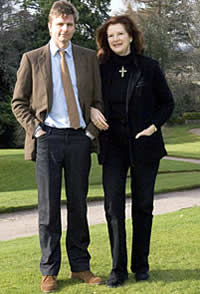
Eventually the countless infidelities and abuses took their toll on Hugh Campbell’s long-suffering wife and she sought comfort briefly with another man. Hugh Campbell exploded—and so did the marriage.
“The affair was over almost as soon as it had started but Pa went wild. He was the philanderer, she was the long-suffering faithful one; it was an outrage. His anger towards her was brutal and sustained until at last she could take no more and moved on.” (Title Deeds, page 250.)
After 22 years of marriage their mother finally called time and left her husband in 1979, to the relief of the children who now at least didn’t have the fear that their father might one day kill her. Hugh Campbell’s response to his wife’s defection was simple, but wholly in character: he kept four girlfriends simultaneously for several years (including a Bond girl of the time, the actress Catherine Schell), none of them knowing about the others. Eventually he would marry one of them, though without telling any of the children until afterwards. Of the four women, Angelika Lazansky was the one least liked by Liza Campell but it was she who now became their stepmother when she married the Earl. She had been born in Czechoslovakia but her parents fled the country during the Nazi occupation and she made her way eventually, via Africa and Paris, to Britain where she once dated the Prince of Wales and was briefly regarded as a possible bride for the Prince. She was happy to settle for an Earl and someone else would find out what marriage to Prince Charles was like. Her close friend, and another Czech exile, Baroness Marie-Christine Agnes Hedwig Ida von Reibnitz, was more successful in bagging a Royal and as a result is better known today as Princess Michael of Kent after marrying Prince Michael of Kent, the Queen’s first cousin, in 1978.
Angelika seemed to have drawn her inspiration on parenting from the stepmother of Snow White. She expected thank-you notes when the children were permitted to visit. Cawdor became an unfriendly place after the marriage and the children, now adults, gradually moved abroad. Liza Campbell in Harpers and Queen magazine in 2001 said that she would like to spend more time at the castle, but for Diabolika, our father's widow
. She said the dowager countess was known locally as Lady Macbeth Mark 2, and called her the stepmother from central casting
.
The death of Hugh Campbell in 1993 may have brought some of the family together at Cawdor for his funeral but it also brought a major shock in its wake. When the will was read Hugh Campbell had disinherited his son and heir, leaving the entire Cawdor estate to the children’s stepmother, while his son, though he inherited the title of Earl of Cawdor, inherited nothing else to go with it. Liza Campbell describes the will as a “dirty bomb”:
The sense of release within the muddle of grief was short-lived and it vanished altogether when I discovered that there was a grand finale from beyond the grave. None of us had any idea that he had concealed a dirty bomb, timed to detonate only after his death.
Hugh Campbell had alienated so many friends, family and acquaintances by the time of his death that no-one could be found to read the address at the memorial service held after his funeral. This is one of the few occasions in her memoir that Liza Campbell expresses genuine anger and disgust at her father and his life:
Hugh had neither earned nor bought Cawdor. It had taken no talent to receive all this extraordinary privilege other than being born the correct sex. These possessions were entrusted to his care but Cawdor was not his. Not only had he shafted his own son in the will rewrite but he had shafted the previous twenty-four generations. This stony treasure had survived six hundred years of wild Scottish history yet it took just one drunken rake to piss it away.
She continues in an even more bitter vein:
Hugh’s life achievements amounted to a list of perfidies: demolishing Stackpole; selling Golden Grove and all the Welsh land; brutalising his first wife; rebuffing his extended family; discarding friendships like used tissues; indulging in fabulously injudicious sexual adventures; destroying his health; and then revealing his most wretched act only after his final exit.
In a farcical reversal of history, an Earl had evicted a stepmother from Cawdor Castle and then a stepmother evicted an Earl. Noting that his daughters had nothing to remember their father by in his will, their stepmother offered them each a keepsake: their choice of the pens on Hugh’s desk. In one of several court cases that were part of the fall-out of the will, Liza Campbell said she blamed her father's alcoholism for the will, saying: "My father did something very treacherous. He was miserable and hated everybody. My brother had done nothing wrong." Golden Grove had been acquired by the Campbells in 1804 when John Vaughan “spitefully bequeathed it to his best friend, John Campbell of Cawdor”, as Hugh Campbell had put it. Was Hugh Campbell remembering this when he too, and just as spitefully, bequeathed Cawdor to his second wife, missing out his son and heir completely? If so, the Cawdors’ family motto, “Be Mindful”, takes on a whole new meaning.
Luckily for the 7th Earl of Cawdor, Colin Campbell, he had been left some other property in a Trust, and though this was a pittance of the total inheritance at least it was beyond the clutches of his father or ‘Diabolika’, the stepmother. The Trust bequeathed to Colin Campbell consisted of Drynachan, a nearby hunting lodge and small estate which had been run into the ground by Hugh Campbell. From a sparsely populated grouse moor the new Earl turned it into a profitable grouse, partridge and pheasant shoot that provided funds to help repair other parts of the estate. In time-honoured tradition foreign tourists can now pay for the fun of blasting innocent birds out of the sky and onto the dinner plates of the rich.
But by far the most lucrative part of the Campbell inheritance is Cawdor Castle which generates a considerable income from tourist visitors eager to pay for the questionable privilege of being shown around ‘Macbeth’s’ castle. But now if Hugh Campbell’s children want to enter Cawdor Castle they have to pay for a visitor’s ticket like all those tourists. The surrounding land still yields plenty of rents from the Lord’s numerous tenants, though the Lord these days is a Czechoslovakian-born Countess.
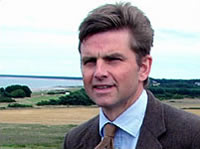
The young 7th Earl was even at one point reduced to squatting in his own home, moving into Cawdor with his family when his stepmother was away on holiday in New York. She flew back immediately, probably by plane rather than broomstick, and started court proceedings to have them evicted. The court decision was as unsatisfactory as it was incomprehensible when the judge ruled that Colin Campbell and his wife could stay in Cawdor—but their three small children could not!
Hugh Campbell’s journey through life—and death—had been fuelled largely by alcohol but after his demise at just sixty his daughter discovered from his friends that he also had a hefty cocaine habit:
I was amazed—not that he was a cokehead but that I had missed it when it was blindingly obvious. Hugh was always up until the early hours, forever leaving the room only to return mopping his nose with a large spotted handkerchief, forever having wild mood swings. Coke extends the capacity for drink and delays the falling-over stage.
In her memoir Liza Campbell tells her story with wit and a disarming honesty which makes it well worth reading for her writing style alone. “Wry, deadpan, whimsical” is just one description.
As an added bonus her memoir should dispel any lingering beliefs that our social superiors are also our morally superior to us, and for those who think aristocratic life is all doilies and smoked salmon on the lawn, her book will come as an eye-opener and a salutary corrective.
Title Deeds: A Work of Friction
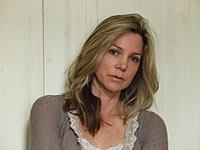
Much of the above has been summarised from Title Deeds: A Work of Friction, by Liza Campbell (Doubleday, 2006, Hardback edition). Liza (Lady Elizabeth) Campbell is the daughter of the 6th Earl of Cawdor and her memoir is a frank and often amusing account of her upbringing in Wales and Scotland with the break-up of her aristocratic family constantly in the foreground. Title Deeds is not just another misery memoir however; her wit and sense of language raise it above most titles belonging to this recent literary genre. Somehow she manages to describe what was often a painful childhood with humour as well as candour. She pulls no punches as she catalogues her alcoholic and cocaine-addicted father’s countless outrages and while she is often angry and occasionally bitter about her father, she avoids self-pity even when her distress is quite evident. Her mother and the five children clearly loved their father, at least when he wasn’t behaving appallingly towards them, an ambivalence which only intensified their confusion when confronted by his bewildering and frightening behaviour. Liza Campbell can be surprisingly forgiving at times about conduct that most people would find difficult, even impossible, to forgive. She writes with a prose style that is light without being lightweight, and her memoir comes highly recommended.
In the USA Title Deeds is called A Charmed Life: Growing Up in Macbeth's Castle, presumably because the publishers think Americans wouldn’t understand the word-play in Title Deeds. Liza Campbell’s life at Cawdor wasn’t as charmed as the American title would suggest and Macbeth never lived in Cawdor Castle, but then commercial interests have never let the facts get in the way of a good marketing opportunity.
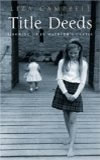
The Seven Earls of Cawdor (created in 1827)
Although the Campbells have been Scottish Thanes of Cawdor since 1295, their first British title was a Barony conferred on the 19th Thane, John Campbell (1753-1821), on 21st June 1796. A Baron is the lowest of the five degrees of the UK Peerage; from highest to lowest the pecking order is: Duke, Marquess, Earl, Viscount and Baron. The Barony gained John Campbell an automatic entry into the British Peerage but within a few months he would earn himself a footnote in British history when he repulsed the last invasion of mainland Britain by a foreign army.
He was in charge of the Pembrokeshire militia when a French force attempted to invade Britain during the so-called ‘Fishguard Invasion’ of 1797. On the 22nd of February four French men-of-war with troops on board, under the command of General Tate, an Irish-American adventurer, appeared off Carreg Gwastad Point near Fishguard. To the great alarm of the inhabitants a rabble army of about 1,400 mercenaries and former convicts disembarked, but it quickly capitulated, practically without striking a blow, to a combined force of the local militias under Sir Richard Philipps, Lord Milford, and John Campbell, 1st Baron Cawdor.
When the French force landed they set about looting the peninsular for food, until the discovery of the locals’ supply of wine diverted their attentions to liquid refreshments instead, rendering many of the invaders too drunk to fight. None of the Pembrokeshire troops under John Campbell’s command were regular soldiers (and at least a fifth were volunteer civilians), and they amounted to half the number of the French force. But among the crowd who gathered on the overlooking cliffs to watch the confrontation were hundreds of Welsh women clad in then fashionable scarlet cloaks and low-crowned felt hats. Thus dressed, these women may well have looked like British army Redcoats to the French from a distance. The deception may not have been intentional, but its effect was the same and the French surrendered to what they thought was a vastly greater force, and one local woman actually captured 12 drunken Frenchmen with a pitchfork. In 1804 John Campbell’s close friend John Vaughan of Golden Grove died, leaving him his extensive Carmarthenshire estates in his will. On John Campbell’s death in 1821, his son, John Frederick Campbell, became the 2nd Baron Cawdor, soon to be elevated to an earldom in 1827.
- John Frederick Campbell, 1st Earl of Cawdor and 2nd Baron Cawdor (1790-1860). Became Earl in 1827.
- John Frederick Vaughan Campbell, 2nd Earl of Cawdor (1817-1898). Became Earl in 1860.
- Frederick Archibald Vaughan Campbell, 3rd Earl of Cawdor (1847-1911). Became Earl in 1898.
- Hugh Frederick Vaughan Campbell, 4th Earl of Cawdor (1870-1914). Became Earl in 1911.
- John Duncan Vaughan Campbell, 5th Earl of Cawdor (1900-1970). Became Earl in 1914.
- Hugh John Vaughan Campbell, 6th Earl of Cawdor (1932-1993). Became Earl in 1970.
- Colin Robert Vaughan Campbell, 7th Earl of Cawdor (b. 1962). Became Earl in 1993.
The Heir Apparent is the present holder's son James Chester Campbell, Viscount Emlyn (born 1998).
The Earls of Cawdor are also Viscounts Emlyn, created in 1827. The title is usually conferred on the heir apparent.